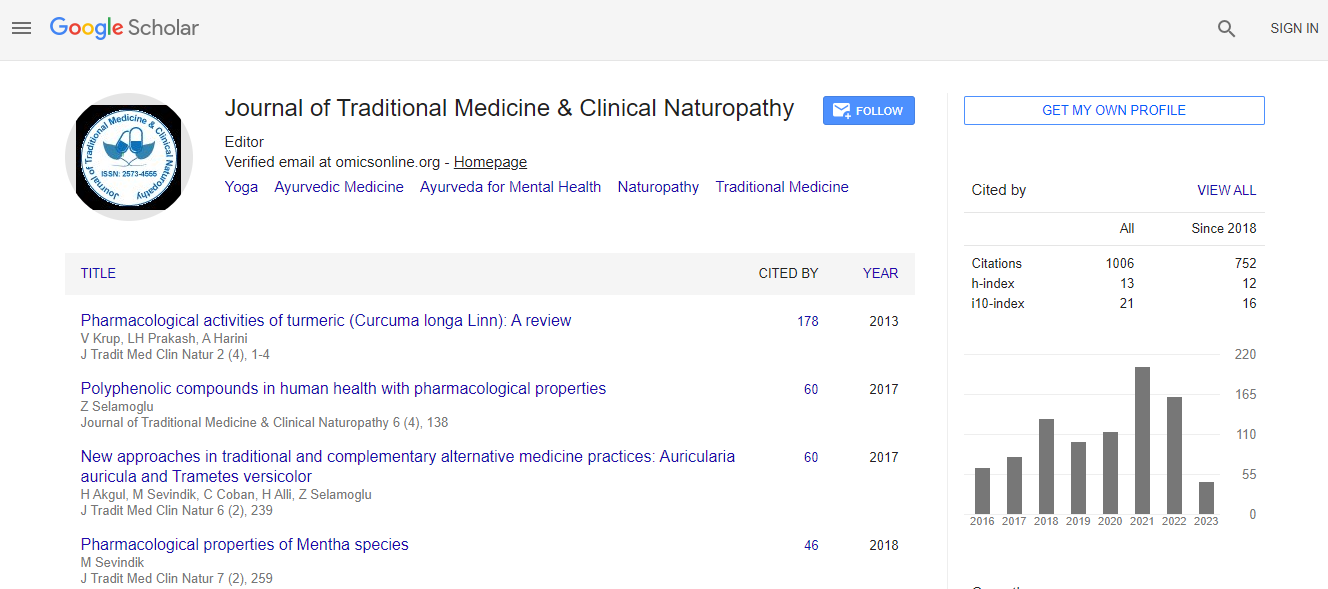Our Group organises 3000+ Global Conferenceseries Events every year across USA, Europe & Asia with support from 1000 more scientific Societies and Publishes 700+ Open Access Journals which contains over 50000 eminent personalities, reputed scientists as editorial board members.
Open Access Journals gaining more Readers and Citations
700 Journals and 15,000,000 Readers Each Journal is getting 25,000+ Readers
Google Scholar citation report
Citations : 1504
Journal of Traditional Medicine & Clinical Naturopathy peer review process verified at publons
Indexed In
- CAS Source Index (CASSI)
- Google Scholar
- Sherpa Romeo
- Open J Gate
- Genamics JournalSeek
- RefSeek
- Directory of Research Journal Indexing (DRJI)
- Hamdard University
- EBSCO A-Z
- Publons
- Geneva Foundation for Medical Education and Research
- Euro Pub
- ICMJE
Useful Links
Recommended Journals
Related Subjects
Share This Page
Toxicological effects of Ambrosia maritima in Nubian goats
6th International Conference and Exhibition on Traditional & Alternative Medicine
Ilham M O Ahmed, Mohammed A S, Halima M O and Ibtehal M A Ahmed
Veterinary Research Institute, Sudan University of Khartoum, Sudan
Posters & Accepted Abstracts: J Tradi Med Clin Natur
Abstract
Toxicity of indigenous plant Ambrosia maritima was investigated. Twenty four, 6-8 month old, 12 female and 12 male of Sudanese Nubian goats were used. Dried leaves powder of Ambrosia maritima was mixed with water and given orally by drench to the animals at a dose of 1000 or 2000 mg/kg/day for 126 days. Two females drenched the plant at a dose of 1000 mg/kg/day, were died at day 8 and 9 post treatment and one female drenched the plant at a dose of 2000/kg/day died at day 13. The results revealed that goats drenched the plant for 126 days, showed chronic toxicity evident by clinical symptoms, pathological and biochemical changes. The main symptoms were watery diarrhea, inappetance, respiratory distress and depression. Later these symptoms disappeared and the animals appeared healthy. The most evident pathological features were hydrothorax, hydropretonium, hydropericardium, and enlargement of the liver. Histopathological changes were exemplified by degeneration and necrosis of the hepatic cells. Focal necrosis, congestion and haemorrhag of proximal convoluted tubules, Necrosis of intestinal vili with severe infiltration of inflammatory cells, congestion of alveolar capillaries and pancreatic hyperplasia all these changes were correlated to the activity of Asparate Aminotransferase (AST), Alkaline phosphate (ALP), the concentration of cholesterol, sodium and potassium in the serum, and with the hematological values. The effect of the plant on males was less marked compared to that on female goats. There was gradual increase in mean body-weight of both sexes.Biography
Email: elhamsud@hotmail.com

 Spanish
Spanish  Chinese
Chinese  Russian
Russian  German
German  French
French  Japanese
Japanese  Portuguese
Portuguese  Hindi
Hindi 
